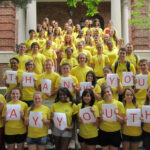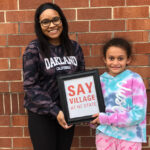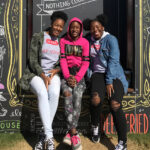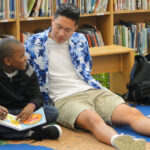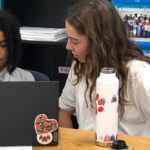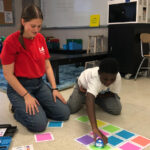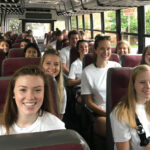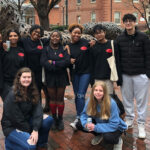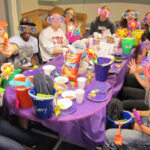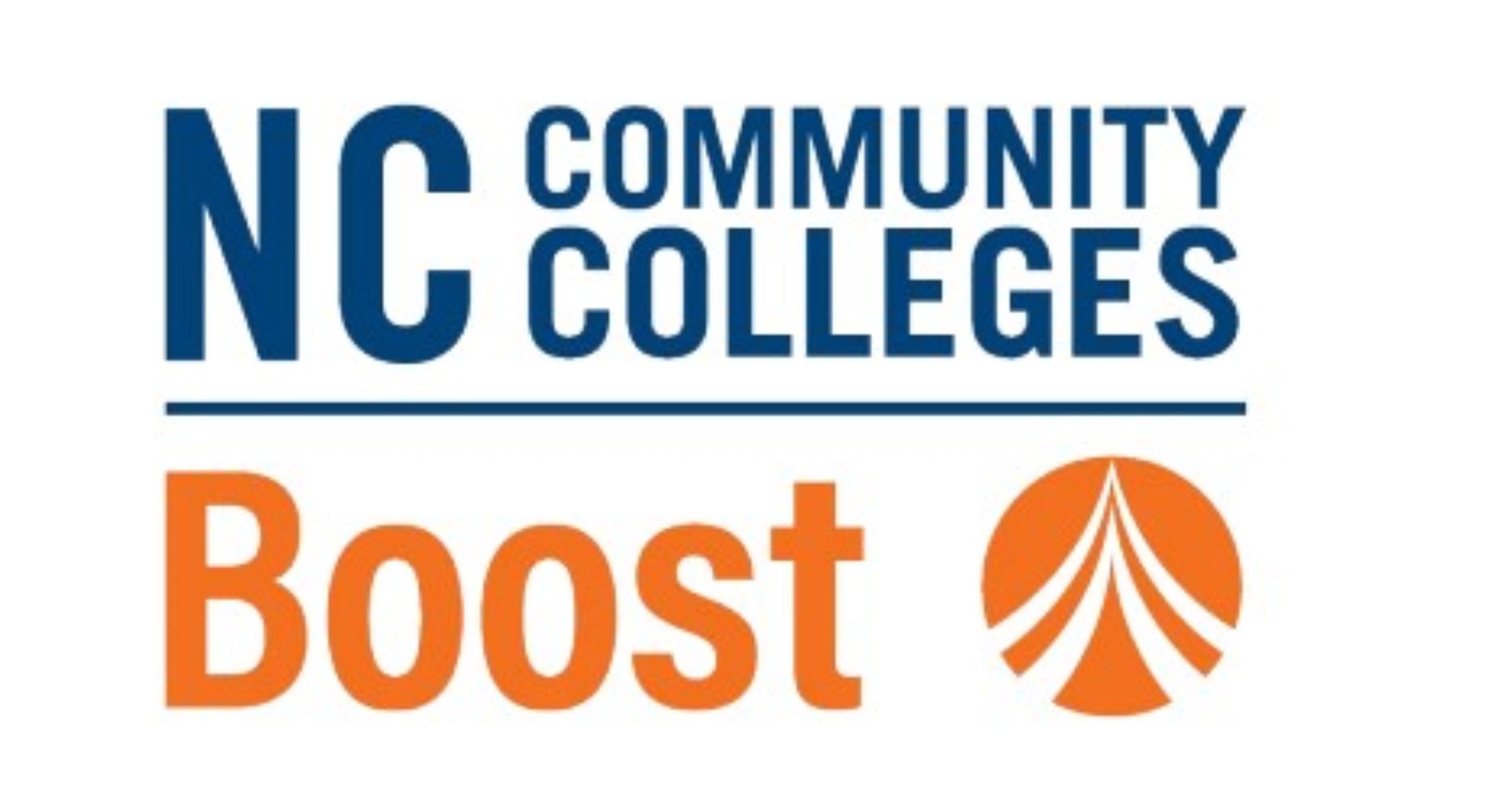SAY Village Celebrates 20 Years of Advocating for Youth
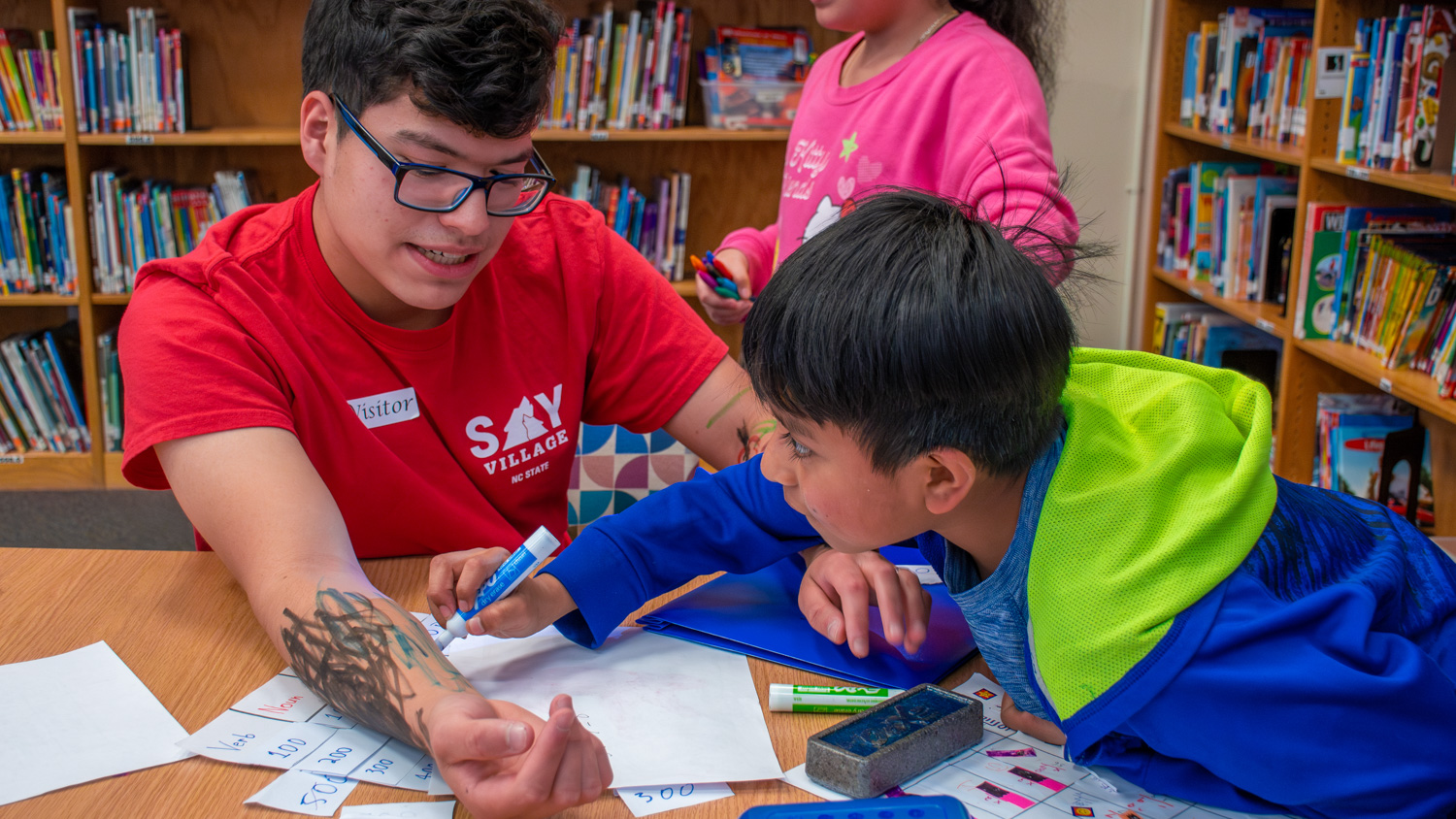
At Olds Elementary School in Wake County, a high-stakes game of Jeopardy! was underway, and Gabriel Castillo Calderon’s arm was on the line.
The Expo marker-wielding elementary schoolers he was there to mentor as part of Students Advocating for Youth (SAY) Village—a living and learning village for NC State students passionate about serving young people—wanted to draw on his skin rather than engage with his lesson.
So he cut a deal: If they finished his Jeopardy-themed math activity, his arm was their canvas.
“They were just ready to tear the papers off the Jeopardy! board to get it done,” said Castillo Calderon, an N.C. Teaching Fellow and mathematics education major.
Learning moments like this, which allow students like Castillo Calderon to adapt their lessons to the reality of the classroom, are a hallmark of the NC State College of Education’s SAY Village, which is celebrating its 20th anniversary this academic year.
“It’s a way for our college students to enter a public school their very first semester and work with students one-on-one,” said Robin McWilliams, who has served as SAY Village’s director since 2005. “For the kids in the program, they build a partnership with a role model who is in college and has a bit of knowledge to pass on. It’s a partnership that really benefits both populations of students.”
Envisioned by former Associate Dean for Student Success and Strategic Community Engagement Anona Smith Williams as part of NC State’s Living and Learning Village initiative, which was co-chaired by former College of Education Dean Kay Moore and former women’s basketball Coach Kay Yow, SAY Village serves as a conduit for NC State students who are passionate about serving young people, particularly in Wake County schools.
“Because we are a land-grant college of education, it is important for our pre-service teachers, and for all students interested in working with youth, to have a better understanding of the underpinnings that cause educational disparities in our classrooms across the state,” said Smith Williams, the NC State College of Education’s 2023 Distinguished Alumna who retired from NC State last year. “Helping children learn positive and effective ways of communicating their needs, problem solving and becoming self-aware of their strengths and talents is why SAY Village is important.”
SAY Village Starts With Students …
When Krystal Strader ’09, ’24MED led campus tours as an undergraduate, she often fielded questions from incoming students who were concerned about finding their place on such a large campus.
Her response? Join SAY Village. That’s what she did as a first-year student, when SAY was still in its second year and was located in Lee Hall on NC State’s West Campus
“What I enjoyed most about SAY Village was the community,” said Strader, an N.C. Teaching Fellow who was part of SAY village from 2005 to 2006. “We were just grounded in that passion for advocating for youth.”
By the time SAY Village moved to Syme Hall in 2007, it had gained a reputation as a place for aspiring educators who wanted to create mentorship opportunities.

“As soon as I came in, I realized there were a lot of other young people who were trying to be in education, and I fell in love with it,” said KeJuan Weaver ’13, who was part of SAY Village from 2009 to 2011. “I just remember feeling like this is where I’m supposed to be.”
According to McWilliams, the sense of belonging that Strader and Weaver felt is an integral part of SAY Village’s structure.
“It’s easier to advocate for a young person when you feel connected to a community,” McWilliams said.
About 50 undergraduate students make up SAY Village at one time. In addition to McWilliams, the SAY students are supported by education advisors, which are equivalent to resident advisors; and the program’s graduate assistant.
“Having people where you’re living to support you is really helpful,” said Martia Williams ’22, who was part of SAY Village from 2018 to 2021. “We all have this excitement and passion for helping students.”
… Who Enter Schools to Advocate …
As a first-year elementary education major, KeJaun Weaver knew he wanted to work with kids right away. That’s why he joined SAY Village, which provided him with immediate, weekly opportunities to create lesson plans and mentor elementary school students.
“Being a teacher, especially in the K-12 realm, it’s all about relationships,” Weaver said. “In SAY Village, you get a jump on making relationships with kids.”
The lessons students teach are often tied to academics, but they can be about topics such as leadership or self-esteem. What matters, McWilliams said, is having a well-thought-out plan and then being able to adapt to the specific needs, academic or otherwise, of your students.
“This is about being prepared as a college student to be an advocate every single week,” McWilliams said.

For Martia Williams, who spent three years in SAY Village, sometimes advocating for her students meant introducing them to STEM concepts through a creative, slime kit science lesson. But other times, it meant acting as a listening ear to high school students who were trying to determine where they wanted to attend college in the midst of the COVID-19 pandemic.
“Having those times to be able to work with students one-on-one and support them is why SAY Village is so important,” Williams said. “Mentorship programs like SAY Village give students an opportunity to talk to somebody outside of a parent or teacher who they can rely on.”
While much of the mentorship SAY Village provides occurs at schools, additional opportunities also occur on NC State’s campus or even, Krystal Strader remembers, at the North Carolina State Fair.
“Some of the students we took had never been, so it was really cool to see that new experience through their eyes,” Strader said.
Over the past 20 years, McWilliams has heard from multiple K-12 students who received mentorship through SAY Village about how the program has shaped their lives.
“They’ll say, ‘I was in Fuller Elementary eight years ago’ and now they’re grown up and in college,” McWilliams said. “Having a direct impact upon the community outside of NC State is our difference maker.”
… for Youth for Years to Come.
“Even the biggest flowers started as seeds,” reads the tag on Martia Williams’s apartment door. She’s now earning her master’s in higher education administration at The Ohio State University, but the tag is from her first field experience in SAY Village.
While the message once applied to the K-12 students she mentored, it is also a fitting description of Williams and all of the other NC State students who have been part of the program over the years.
“SAY Village is a place where you will grow a lot as a mentor and as a person,” Williams said. “The learning experiences I had are a big part of why I’m still an educator.”
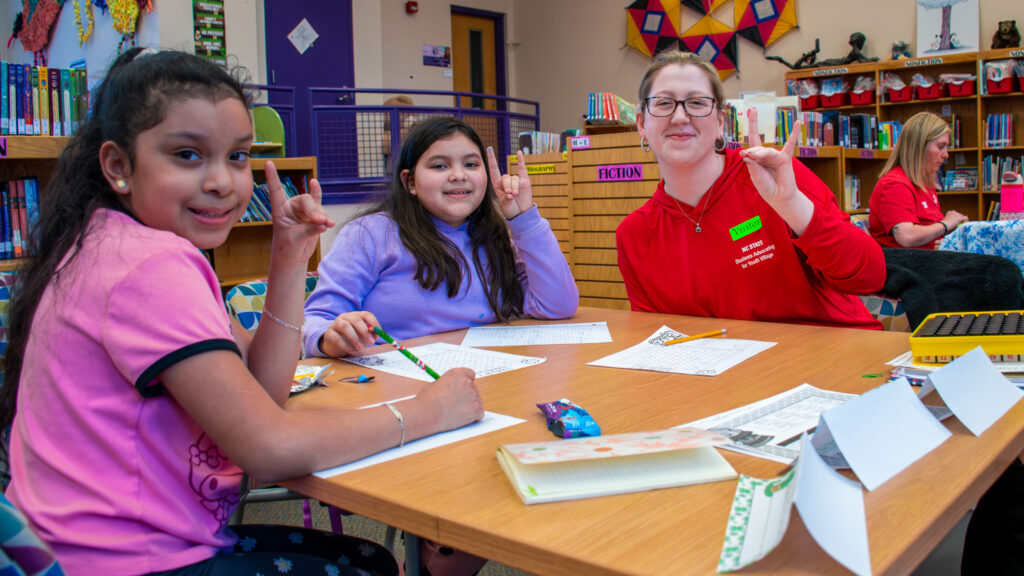
KeJuan Weaver, who has spent the last decade in the classroom and currently teaches professional communications at James Coble Middle School in Arlington, Texas, said he still uses the relationship-building skills he gained through SAY Village to reach his students.
“I know I’m a better teacher because I went through SAY,” Weaver said.
Krystal Strader agrees. She spent 10 years as a high school mathematics teacher in Randolph and Gaston counties before moving to a curriculum development position at the district level. Then, she returned to the NC State College of Education to earn her master of education in learning design and technology and now works as a digital learning facilitator for Gaston County Schools.
Through every stop on her career as an educator, the time she spent in SAY Village remains top of mind.
“That has really influenced my drive in the classroom, of being relentless about putting students first,” Strader said. “Every decision I make is informed by, ‘What is the student experience?'”
Strader, Weaver and Williams are just a few of the SAY Village alumni who have gone on to become extraordinary educators over the years, and when Robin McWilliams visits SAY Village’s current partner schools, he continues to be greeted by reminders of the lasting impact the program has made.
“Teachers have been hired from NC State at all these schools,” McWilliams said. “I’ll walk the halls on the days that we go out and be like, ‘Oh, that name looks familiar.’ So it does have an NC State feel.”
- Categories:
